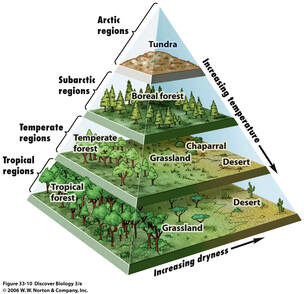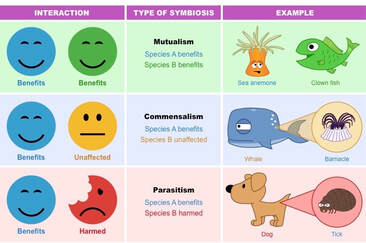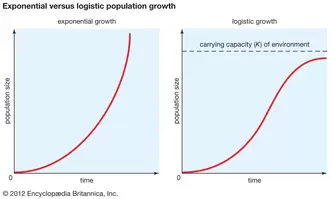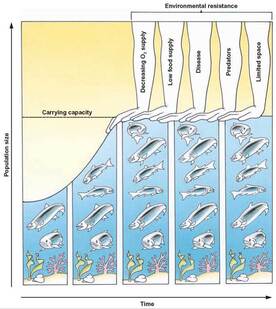|
|
UNIT 8: ECOLOGY |
NC STANDARDS
Bio.2.1.1 Analyze the flow of energy and cycling of matter (water, carbon, nitrogen and oxygen) through ecosystems relating to the significance of each to maintaining the health and sustainability of an ecosystem.
Bio.2.1.2 Analyze the survival and reproductive success of organisms in terms of behavioral, structural and reproductive adaptations.
Bio.2.1.3 Explain various ways organisms interact with each other (including predation, competition, parasitism, mutualism) and with their environments resulting in stability within ecosystems.
Bio.2.1.4 Explain why ecosystems can be relatively stable over hundreds or thousands of years, even though populations may fluctuate (emphasizing the availability of food, shelter, number of predators and disease).
Bio.2.2.1 Infer how human activities (including population growth, pollution, global warming, burning of fossil fuels, habitat destruction, and introduction of non-native species) may impact the environment.
Bio.2.2.2 Explain how the use, protection, and conservation of natural resources by humans impact the environment from one generation to the next.
Bio.2.1.1 Analyze the flow of energy and cycling of matter (water, carbon, nitrogen and oxygen) through ecosystems relating to the significance of each to maintaining the health and sustainability of an ecosystem.
Bio.2.1.2 Analyze the survival and reproductive success of organisms in terms of behavioral, structural and reproductive adaptations.
Bio.2.1.3 Explain various ways organisms interact with each other (including predation, competition, parasitism, mutualism) and with their environments resulting in stability within ecosystems.
Bio.2.1.4 Explain why ecosystems can be relatively stable over hundreds or thousands of years, even though populations may fluctuate (emphasizing the availability of food, shelter, number of predators and disease).
Bio.2.2.1 Infer how human activities (including population growth, pollution, global warming, burning of fossil fuels, habitat destruction, and introduction of non-native species) may impact the environment.
Bio.2.2.2 Explain how the use, protection, and conservation of natural resources by humans impact the environment from one generation to the next.
ESSENTIAL QUESTIONS
How do ecosystems change over time?
How do biotic and abiotic factors influence ecosystems and populations?
How do human activities influence and alter ecosystems?
How does energy flow through an ecosystem?
How does matter cycle in ecosystems?
What role do humans play in maintaining the ecosystem?
How do organisms interact with one another in an ecosystem?
In what ways are organisms adapted for life in the ecosystem in which they live?
How do ecosystems change over time?
How do biotic and abiotic factors influence ecosystems and populations?
How do human activities influence and alter ecosystems?
How does energy flow through an ecosystem?
How does matter cycle in ecosystems?
What role do humans play in maintaining the ecosystem?
How do organisms interact with one another in an ecosystem?
In what ways are organisms adapted for life in the ecosystem in which they live?
|
DAY 1: ENERGY FLOW
HONORS
Trophic Cascades |
|
|
DAY 2: CYCLES OF MATTER
|
|
DAY 4: POPULATIONS
|
DAY 5: RESOURCES
HONORS
Case Study - Rivers
Case Study - Rivers
Extention
World Population Counter LINK
World Population Counter LINK
DAY 6: HUMAN IMPACT
DAY 7: REVIEW
DAY 8: UNIT TEST



